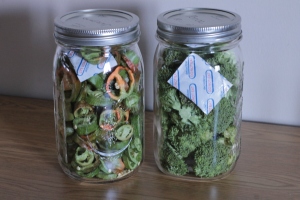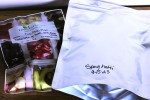Best Practices: Start with the end in mind
Freeze-dried food has entered the home food preservation scene! Domestic freeze dryers have been introduced to homeowners within the past 10 years. More preservation enthusiasts have ventured into this form of food preservation. Once a machine has been chosen and placed in your home, there are a few things that you should keep in mind for the best results for your family.
As with any food preservation method, be sure you start with decent quality food. The better quality of food you use, the better results you will achieve when freeze drying your food.
Often, we think of food preservation as a means of saving food for an extended period of time, with freeze-drying extending that time beyond other methods. Freeze drying is effective for preserving your garden as well as preparing for possible food shortages or natural disasters. Freeze-drying can offer short-term benefits for immediate enjoyment as well. Fruit freeze-dried today can be enjoyed as a snack tomorrow. Leftover meals can be freeze-dried for a quick family dinner on a busy night or preserved for a camping or hiking trip in the coming months. Garden herbs and vegetables can be freeze-dried and used in recipes for meals throughout the year.

The process of freeze-drying food has minimal preparation, the processing time may be longer but does not require constant attention, and food may be immediately packaged from the freeze dryer for short-term or long-term storage. While the steps may be simple, there are several tips to make this process more effective.
Consider these tips:
- Freeze-drying times are not a fixed number. The amount of product on the tray will impact the processing time, but the good news is that the freeze dryer will adjust without human intervention.
- Uniformly prepared food pieces optimize drying time. When placing trays into the freeze-dryer, place denser items in the center for the best results.
- The higher the water content in the food, the longer the processing time. Pre-freezing the food may help reduce processing time.
- A warmer room temperature will increase the processing time.
- Almost all foods can be freeze-dried, but for the best results, avoid oily foods including butter, peanut butter, and chocolate. Also, for more success, refrain from using honey, syrup, and jam.
- Be certain to label your jars and bags as “raw” if you have freeze-dried any uncooked beef, poultry, fish, pork, or eggs, don’t assume the freeze-drying process makes your food bacteria-free. Raw meat should be used right away because freeze-drying does not kill bacteria.
- Freeze-drying is not considered cottage food.
Track your journey
While freeze-drying is not an exact science, it is recommended to keep a journal of all your successes and lessons learned. Keep track of what works for you and your family and document your freeze-drying journey! For more information on freeze-drying, check out the Freeze-Drying: Consider This blog series.
Resources:
Utah State University: https://extension.usu.edu/preserve-the-harvest/research/buying-a-home-freeze-dryer-what-to-know-before-you-go
https://harvestright.com/wp-content/uploads/2019/09/GUIDE-TO-FREEZE-DRYING.pdf (retrieved on 11-2-2023)
Melanie Hausch, food preservationist and subject matter expert, Bryan, Ohio
Written by:
Emma Horstman, Extension Educator, Ohio State University Extension, Paulding County
Melissa J. Rupp, Extension Educator, Ohio State University Extension, Fulton County
Reviewed by:
Ohio State University Extension, Food Preservation Team
Photo Credit:
Laura Halladay, Extension Educator, Ohio State University Extension, Greene County.





